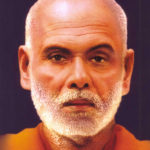It was Pataliputra, the capital city of Nanda Dynasty. A Brahmin scholar with a tuft of hair on the back of his shaven head entered the palace of the mighty Nanda Empire. Chanakya was his name. He saw there ten gold plates and thrones. He was informed that nine of them were for the royal princes and the tenth was reserved for the person who was most learned in Vedas. He sat upon the tenth throne without any hesitation. He told the panicked princes that he would step down only if anybody could beat him in a Vedic debate. But they were aware that the Chief Scholar in their palace was not competent to defeat the wise Brahmin sitting on the throne. The angry princes insulted him and pulled him by his hair tuft. The furious Brahmin immediately untied his tuft and with eyes burning like balls of fire, took the famous oath. “I will not tie this tuft unless I eradicate the whole Nanda Dynasty from this country.” ……. That was the popular Chanakya story……… And what proceeded next was history…
Who was Chanakya?
Chanakya, also known as ‘Vishnugupta’ or ‘Kautilya’, was a professor of Political Science and Economics at the ancient University of Taxila, a daring genius, a philosopher and the royal adviser of King Chandra Gupta Maurya. He was the brain behind the fall of Nanda Dynasty and the establishment of Maurya Empire. Above all, he was the greatest diplomat the world has ever seen. Though he lived 2300 years ago, his ideas are still relevant in the present day world. His book Arthashastra is still considered as a reference in a variety of political situations. With his sharp intelligence and tactful movements to destroy his political enemies forever, he was often misunderstood as a promoter of unethical practices in the political realms of the nation.
Early Days and Education
Chanakya biography, particularly his place of birth, is a matter of controversy. Buddhists and Jains have their own stories. Buddhist version says that he was born at Taxila in North-West India and as per Jain scriptures he belonged to Kerala. His tuft of hair was similar to that of Kerala Nambudiri Brahmins. He lived in between 350 – 275 BCE. Born in a Brahmin family, he was very intelligent and studied all Vedas at the early ages of childhood. During his childhood itself he was very shrewd and was attracted to politics. After studying Vedas, he learned practical political strategies and finally turned to economics.
Taxila University was a prominent learning centre of ancient India, from where he mastered in-depth knowledge in religion, politics and economics. With a provision for accommodating about 10,000 students at a time, this renowned university had created eminent scholars in a variety of fields including religion, philosophy, science, economics, politics, archery, astronomy and in all eighteen arts.
The Patriotic Professor
After completing his studies in Taxila, he became a Professor in Political Science and Economics of the same university. This ideal teacher became great inspiration to his students. He taught them to fight for justice and they stood with him with full dedication.
That was a time when the country was facing political turmoil caused by both internal and external upheavals. Rulers of small kingdoms within the country were trying to conquer prosperous regions and at the same time foreign invaders like Greeks were setting their military force ready to attack the weakened regions. The patriot in the professor arose. He could not bear the grave situation of the country. He wanted to save the country from foreign invasion and uphold its political and economic stability. He resigned his job at Taxila University and went to Pataliputra, the capital of Nanda Empire. He had decided to rewrite the political history of India.
Oath to Overthrow Nanda Kingdom
The smaller kingdoms of the country did not have the strength or vision to stand together and fight against a foreign invader. The mighty Nanda Empire was militarily stronger compared to these smaller kingdoms. Chanakya went to Pataliputra to suggest Nanda King to position his army to defend the invasion of Greek King Alexander….. But an unexpected incident changed everything.
He was a proud Brahmin. He was fearless and in pursuit of truth. Under the Nanda rule he observed non-observance of righteousness. He saw the throne of wisdom set aside for the undeserved. He wanted the throne to be adorned by the deserved person. He himself was the deserved person and he challenged them all to prove otherwise by an intellectual debate…… But the incident shattered the whole situation. ……And Chanakya was a proud man….
….He was humiliated. He vowed to uproot the whole Nanda dynasty, and walked out from the palace, like a wounded lion.
Establishment of Maurya Empire
He met Chandra Gupta, in whom he found a future emperor. They joined hands to fight against Nandas. Initially they made mistakes in their movements, but they learned lessons from them and applied new strategies based on practical situations. They knew that war could not be won by attacking the centre; the mistake what Abhimanyu had made in the Kurukshetra! Starting from the boarder areas, they moved inside step by step. Finally, they conquered Pataliputra and dethroned Nanda king. The furious Brahmin fulfilled his oath. Chandra Gupta became the new emperor and it was the rise of the Maurya Empire.
Expansion of Maurya Empire
There were two enemies before Chanakya – the Nandas and the Greek. With the power of his penetrating brain, Nanda dynasty collapsed and the kings of neighbouring territories united under Chandra Gupta. With their power of unity they defeated Greeks and liberated the kingdoms from their possession. Maurya Empire expanded through the length and breadth of the country, which extended up to Persia in the North, Mysore in the South, Bengal in the East and Gujarat in the West, and it became the greatest Indian Empire.
The End of a Legend
After Chandra Gupta, his son Bindusara became the King and Chanakya continued to be his royal advisor. It was believed that he died due to a trickery played by Bindusara’s minister Subandhu. He was envious of this great Brahmin and burned him to death under the pretension of arranging a ceremony.
His Visions and Glory
Chanakya was a great patriot and had a broader vision about his country. He was concerned about the happiness and welfare of the people under the smooth administration of an efficient king. His famous books include Arthashastra and Chanakya Neeti.
Arthashastra discusses the economic policies of a nation, war strategies and international relations in detail. It discusses about law and order, how to protect a king, how to use spies, how to choose ambassadors, economic activities of the country, and numerous issues. The contents of the book reflect his dreams about our country covering the economic, political and social aspects with clear vision.
Chanakya Neeti contains 455 sutras, which present the strategies about the ideal way of life, presented by a philosophical mind. Success is attained through control of senses and by spiritual development rather than running behind material pleasures.
An Inspiration of All Times
Chanakya story is an inspiration of all times. He was a kingmaker and great statesman who for the first time unified Indian states under the mighty Maurya Empire to fight against the attack of Alexander. He was also called as ‘Indian Machiavelli’ though he lived 1800 years before Machiavelli and was definitely a much greater person in every manner. He was kind-hearted to the poor, but devil to deceit. If we can understand and bring into practice the great principles taught by this Taxila scholar, the whole world will change in no time and will become a much better place to live.









